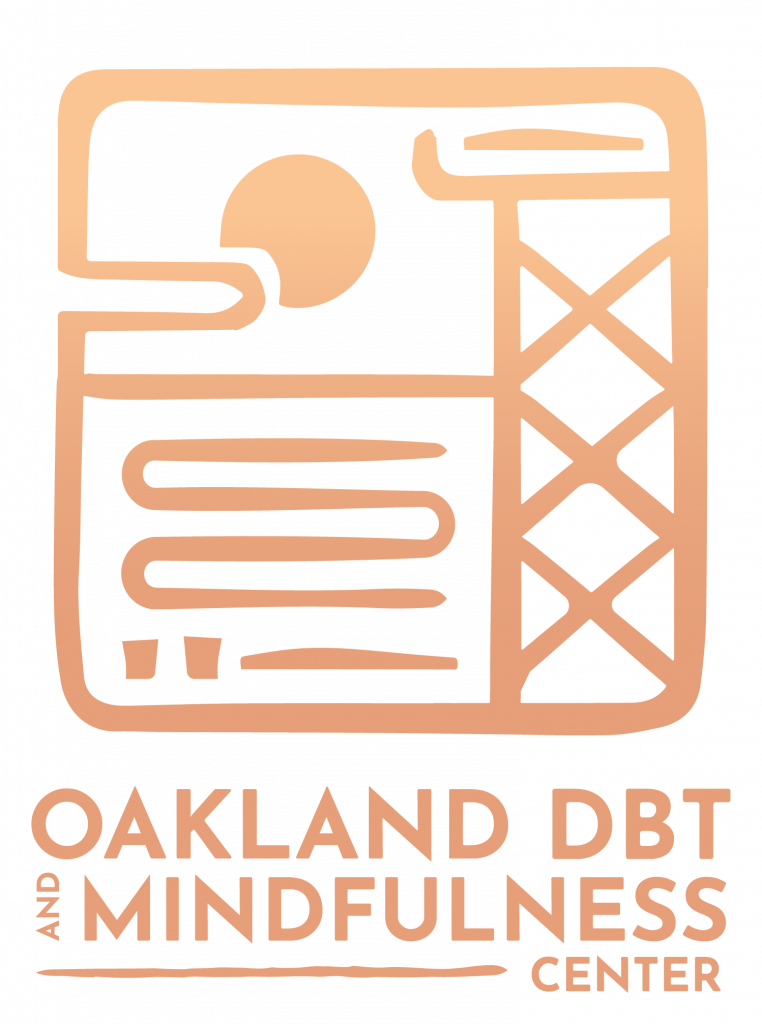Technology has become inseparable from modern life. We use it to work, connect, learn, and even relax. Yet the constant stream of emails, messages, and notifications can take a heavy toll on our minds and bodies. Many people today experience digital burnout, a unique form of exhaustion that stems from prolonged screen time and the relentless pace of online life. Addressing this challenge requires more than simply unplugging for a weekend—it calls for practical, science-based strategies that can be applied in everyday moments.
This is where DBT skills for digital burnout and screen time recovery come into play. Originally developed to help individuals regulate emotions and manage distress, Dialectical Behavior Therapy (DBT) offers tools that align perfectly with the struggles of our hyperconnected age. By weaving DBT techniques into daily routines, it becomes possible to reset, recharge, and restore balance in a world that rarely slows down.
What Is Digital Burnout?

Digital burnout refers to the mental, emotional, and physical fatigue caused by overexposure to technology. Unlike general tiredness, it often lingers even after sleep and manifests in ways that affect productivity, mood, and overall well-being.
Common Signs of Digital Burnout
- Cognitive overload: difficulty concentrating, memory lapses, slower problem-solving
- Emotional strain: irritability, increased anxiety, heightened sensitivity to stress
- Physical symptoms: eye strain, headaches, disrupted sleep cycles, and posture-related discomfort
- Social withdrawal: avoiding in-person interactions, preferring digital communication despite fatigue
The rise of remote work, online schooling, and digital socializing has blurred the boundaries between professional and personal life, making it harder than ever to disconnect.
Why “Just Unplugging” Often Fails
A popular solution to burnout is the idea of a “digital detox.” While short-term breaks can help, most people cannot simply abandon their screens. Work, family obligations, and even therapy sessions are often conducted online. For this reason, sustainable solutions must focus on changing how we interact with technology rather than avoiding it altogether.
DBT provides exactly this kind of practical framework. It equips people with skills that are flexible, actionable, and rooted in daily practice—making them highly effective in combating digital fatigue.
How DBT Helps in Screen Time Recovery
DBT is built on four core areas of skill development:
- Mindfulness – cultivating awareness of the present moment
- Distress Tolerance – managing stress and crises without worsening the situation
- Emotion Regulation – building stability and reducing vulnerability to emotional swings
- Interpersonal Effectiveness – strengthening communication and setting healthy boundaries
Each of these areas maps directly onto the challenges of living in a digital-first world. Let’s explore how.
Mindfulness: Restoring Presence in a Distracted World
Mindfulness is the cornerstone of DBT. In the digital context, it helps individuals break free from autopilot behaviors like compulsive scrolling or multitasking.
Applications for Digital Well-Being
- One-mindfully: Commit attention to a single activity—reading, writing, or even checking email—without splitting focus across multiple apps or screens.
- Noticing urges: Instead of immediately responding to the impulse to pick up a phone, pause and describe the sensation (“I feel restless,” “I want distraction”). This builds self-awareness.
- Mindful breaks: Schedule intentional pauses throughout the day, such as looking away from a screen and noticing your breath for 60 seconds.
Over time, these practices improve focus, reduce stress, and make screen use more intentional.
Distress Tolerance: Coping with Overload
Digital burnout often spikes during overwhelming moments—an inbox with 200 unread emails, a flood of messages, or distressing news online. DBT’s distress tolerance skills provide short-term tools to survive these crises without escalation.
Skills for Tech-Related Stress
- STOP technique: Stop, Take a step back, Observe, and Proceed mindfully before replying to stressful digital triggers.
- TIP skills: Reset your body’s stress response with temperature changes (splash cold water), intense exercise, or paced breathing.
- Self-soothing: Replace endless scrolling with calming activities such as stretching, listening to music, or stepping outside for fresh air.
Instead of reacting impulsively to screen stressors, these tools create space for calmer, more deliberate responses.
Emotion Regulation: Rebalancing in a Hyperconnected Age

Excessive screen use often intensifies emotions. Exposure to curated images, alarming headlines, or constant work notifications can create feelings of inadequacy or fear. DBT’s emotion regulation tools build resilience against these triggers.
Practical Applications
- Check the facts: Challenge distorted thinking sparked by online comparisons. Ask: “Is this really true, or is this an incomplete picture?”
- Build positive experiences: Schedule intentional offline activities that bring joy—walking, painting, or spending time with loved ones.
- PLEASE skills: Care for physical health by addressing eating habits, avoiding substances that worsen mood, prioritizing sleep, and moving your body daily.
By stabilizing emotions, screen exposure becomes less overwhelming and easier to manage.
Interpersonal Effectiveness: Setting Boundaries with Technology
One of the most overlooked aspects of digital burnout is the lack of boundaries. Constant availability—through work chats, emails, or social media—often drains energy. DBT’s interpersonal effectiveness skills equip people to communicate needs and limits effectively.
Setting Digital Boundaries
- DEAR MAN strategy: Clearly express limits, such as declining after-hours work calls, while maintaining professionalism.
- Balancing priorities: Weigh the importance of responsiveness against personal well-being.
- Saying no without guilt: Declining unnecessary digital commitments creates space for rest and recovery.
Healthy boundaries not only reduce screen fatigue but also improve the quality of relationships, both online and offline.
Building a Screen Time Recovery Plan
Integrating DBT skills into daily life works best when structured as a recovery plan.
- Assess current habits: Track screen use with apps or journals to identify stress triggers.
- Set clear intentions: Decide which digital activities serve your goals and which drain energy.
- Incorporate skills daily: Use mindfulness breaks, distress tolerance techniques, and emotion regulation practices consistently.
- Prioritize offline joy: Create rituals that replace passive digital habits with fulfilling alternatives.
- Seek support when needed: Professional guidance can provide accountability and personalized strategies.
Beyond Burnout: Building Long-Term Digital Resilience

Screen time is not inherently harmful—it’s how we interact with it that matters. DBT doesn’t ask people to abandon technology but instead empowers them to engage with it on their own terms. The long-term benefits go beyond avoiding burnout: improved focus, deeper relationships, stronger emotional resilience, and a healthier balance between online and offline life.
As the world continues to digitize, learning to manage technology will become as essential as learning to manage finances or health. DBT provides a sustainable path forward.
When Professional Guidance Can Help
If screen fatigue escalates into persistent anxiety, depression, or major disruptions in daily life, professional therapy may be necessary. The team at Oakland DBT center works with individuals navigating the unique challenges of the digital age. By tailoring DBT techniques to each client’s lifestyle, therapists help create lasting change and restore balance.
Conclusion
Digital burnout is a defining challenge of our time, but it doesn’t have to control your life. DBT skills offer practical, evidence-based strategies for reducing screen fatigue, regaining focus, and building healthier boundaries.
By practicing mindfulness, distress tolerance, emotion regulation, and interpersonal effectiveness, it becomes possible to reset not only how we use technology but also how we feel while using it. For those who want deeper guidance, DBT skills classes at Oakland DBT center provide the structure and support to thrive in a digital-first world.
Recovery is not about abandoning devices—it’s about reclaiming control. With DBT, balance, clarity, and resilience are within reach.
FAQs (Frequently Asked Questions)
What is the difference between digital burnout and regular stress?
Digital burnout stems specifically from prolonged screen use, constant connectivity, and information overload. While regular stress can come from many sources, digital burnout is tied to technology use and often leads to fatigue, poor concentration, and emotional strain unique to our digital environment.
Can DBT techniques really help with technology-related fatigue?
Yes. DBT provides practical, evidence-based strategies that address emotional regulation, mindfulness, and stress tolerance. These skills make it easier to manage the overwhelm caused by constant notifications, work demands, and online interactions, offering a sustainable path toward recovery.
How do I know if I need professional support for digital burnout?
If fatigue, irritability, or screen-related stress starts disrupting sleep, work performance, or relationships, it may be time to seek help. Professional therapy can provide personalized guidance, accountability, and tailored strategies that go beyond self-help tools.
What are some simple daily habits that reduce screen fatigue?
Taking intentional breaks, practicing mindful breathing, limiting multitasking, and setting boundaries around notifications are highly effective. Even small adjustments, like device-free meals or tech-free evenings, can significantly improve focus and emotional balance.
Is digital burnout only a workplace issue?
Not at all. While remote work contributes heavily, students, parents, and even children experience screen fatigue. Social media, online learning, and virtual socializing all contribute, making it a widespread challenge that affects every age group.












